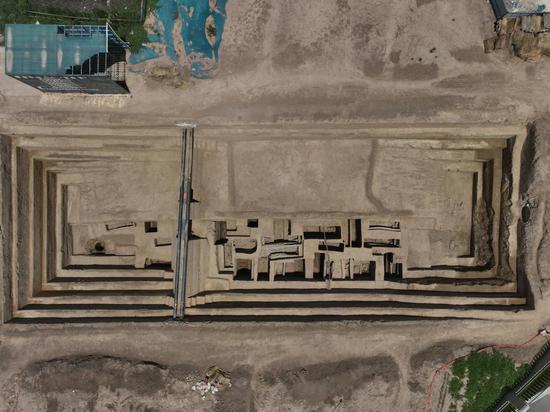A new millisecond pulsar has been found through the collaboration of the National Supercomputing Center in Jinan, and the "Chinese sky-eye," the 500-meter Aperture Spherical radio Telescope (FAST), which marks a new trial success for Chinese supercomputing in this field and will help expand research in modern physics theory.
The National Supercomputing Center in Jinan (known as "Jinan Supercomputing") in East China's Shandong Province and the joint research team from the local Qilu Normal University, utilizing the FAST, discovered a new millisecond pulsar named PSR J1810-0622, the Global Times learned from Jinan Supercomputing on Wednesday.
This millisecond pulsar has a rotation period of 4.55ms, and based on the Galactic electron density model (YMW16), it is estimated to be about 208 parsec from Earth. The research was conducted by the Jinan Supercomputing-FAST joint research team on the Shanhe Supercomputing platform.
It is the first major achievement of the joint research team from the National Astronomical Observatories, Qilu Normal University, and Jinan Supercomputing, and it is also the first millisecond pulsar discovered by FAST using entirely local research resources in the province of Shandong.
Pulsars are the remnants of massive stars that have died. Due to their rapid rotation, their electromagnetic signals fluctuate periodically, like a pulse.
The newly discovered pulsar, named J1810-0622, has a rotation period of 4.55 milliseconds and is about 678 light-years from Earth. The study of pulsars can aid in expanding research in modern physics theories, representing a competitive high ground in natural science for global technological powerhouses, the Global Times learned from Jinan Supercomputing.
To sift through such vast amounts of data to find traces of pulsars relies on high-speed computing systems. The National Supercomputing Center in Jinan is known as the "strongest brain" in the Yellow River basin, boasting large data storage capacity and high computational power.
Researchers from the National Astronomical Observatories and Jinan Supercomputing formed an interdisciplinary research and development team, using artificial intelligence and big data systems to develop signal filtering algorithms that optimize the extraction of data characteristic of pulsars.
The new algorithm shortens the time required 20-fold compared to traditional methods.
Guo Meng, a researcher at the National Supercomputing Center in Jinan, stated that the coding workload might be five to 10 times more than that of the original programs. "Only after proving its accuracy and efficiency would they employ it in the actual search process for pulsar satellites," he said.
In the future, Jinan Supercomputing will continue to deepen exchanges and cooperation with the National Astronomical Observatories, Qilu Normal University, and other parties. Focusing on scientific research, technological development, talent cultivation, public science outreach, and academic exchanges in the intersection of computing and astronomy, it will continuously support the innovative development of China's astronomy, according to Jinan Supercomputing.


















































 京公网安备 11010202009201号
京公网安备 11010202009201号